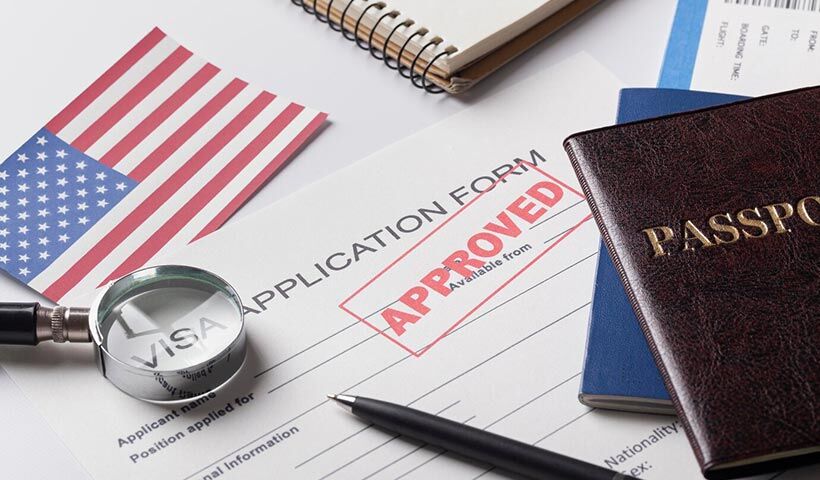
Traveling to the United States is an exciting prospect for many Thai citizens. However, the journey begins with a very important step: securing a U.S. visa. The process, while straightforward, requires understanding and patience. This article aims to explain the timeline and steps involved in obtaining a U.S. visa from Thailand, focusing on various visa types and the overall procedure.
Understanding Different Types of U.S. Visas
The United States offers a diverse array of visa types, each serving specific travel purposes. Each of these visas has its own set of requirements and processing timelines, which can vary based on individual circumstances, application specifics, and the current workload of the U.S. Embassy or Consulate processing the application.
Some of the available visas to Thai nationals include:
- B-1 Visitor Visa: The kind of visa suitable for Thai citizens looking to visit the United States of America for business-related purposes.
- B-2 Visitor Visa: Much like the B-1 Visa, except for those looking to travel to the U.S. for tourism, medical treatment, or family visits.
- F-1 Student Visa: An education visa perfect for Thai students looking to study in the United States.
- CR-1 Visa: A conditional resident visa centered around reunification, allowing spouses of U.S. citizens to come reside with them in the States.
- K-1 Fiancé(e) Visa: The type of visa perfect for allowing a Thai fiancé(e) engaged to a U.S. citizen to enter the United States for the purpose of marriage, provided it occurs within 90 days of entry.
- K-2 Visa: A non-immigrant visa granted to accompanying children of a Thai fiancé(e) or spouse that currently holds a U.S. visa.
- K-3 Spouse Visa: A spouse visa intended for spouses of U.S. citizens to live in the States usually because they are awaiting approval of their immigrant visa petition.
- IR-1 Visa: Intended for spouses of U.S. citizens, offering permanent residency.
- IR-2 Visa: Intended for unmarried children under the age of 21 who are also immediate relatives of a U.S. citizen.
Starting the Visa Application Process
Embarking on the U.S. visa application process involves several steps to begin:
- The initial phase is completing the DS-160 form online, a comprehensive application that requires accurate and detailed information.
- Following this, applicants must pay the necessary visa fee, which varies depending on the visa type.
- Scheduling an interview at the U.S. Embassy or Consulate in Thailand is the next crucial step. This requires careful planning, as appointment slots can fill up quickly, especially during peak travel seasons.
- Applicants must gather all required documents, including a valid passport, recent photographs in the specified format, and supporting documents relevant to the visa type, such as travel itineraries, invitation letters, or proof of financial stability.
The Interview Process
The visa interview is a pivotal part of the application process, as the consular officer aims to assess the applicant’s eligibility for a visa. Applicants need to approach the interview with honesty and clarity, providing straightforward answers to the officer’s questions.
Some of the questions needed to be answered by applicants involve:
- The purpose of the trip
- The applicant’s ties to Thailand
- The financial means to support the travel.
To prevent delays and increase their chances of getting approved, applicants should carefully prepare for the interview. Preparation often includes:
- Reviewing the application form
- Understanding fully the purpose and intention of the trip
- Being ready to explain how it fits within the rules of the visa being applied for.
- Being readily prepared to show ties to Thailand, such as employment, family, or property, which indicate their intent to return after their visit to the United States.
Processing Times and Factors Affecting Them
Processing times for U.S. visas can vary significantly. For example, visitor visas (such as the B-1/B-2) are often processed within a few days to a few weeks after the interview. However, student visas (F-1) may require more time due to additional documentation and verification processes.
Several factors influence processing times
- The volume of applications received by the embassy or consulate can play a significant role, with higher numbers potentially leading to longer wait times.
- Seasonal peaks, such as during summer or around major holidays, can also impact processing times.
- Individual circumstances, such as the need for additional background checks or missing documentation, can further extend the timeline.
After the Interview: Approval, Denial, and Administrative Processing
Once the interview is complete, the application will either be approved, denied, or subjected to administrative processing.
- If approved, the applicant will be informed about the visa collection process.
- In cases of denial, the consular officer will provide a reason, typically linked to U.S. immigration law criteria.
- If subjected to administrative processing, their application requires some further evaluation. This can extend the processing time but does not necessarily mean a negative outcome. Applicants are advised to wait patiently during this period and check their application status online.
Tips for a Smooth U.S. Visa Application Process
To enhance their chances, applicants should consider the following tips:
- Ensure all information on the DS-160 form is accurate and complete.
- Prepare all required documents and bring them to the interview.
- Apply for the visa in advance of the planned travel date to prevent potential delays.
- Practice clear and honest communication during the interview.
- Regularly review their application status online for updates.
Conclusion
Securing a U.S. visa from Thailand is a process that demands attention to detail and preparation. While the time it takes to obtain a visa varies, understanding each step and preparing accordingly can streamline the experience. Patience and organization are necessities, as is a clear and honest approach throughout the application process. By following these guidelines, Thai citizens can navigate the U.S. visa application process with greater ease and confidence.






No Comment